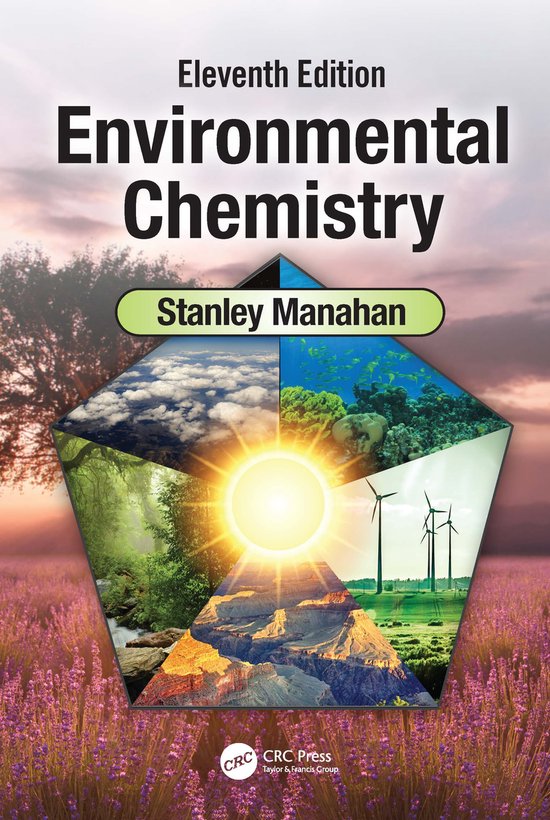
Environmental Chemistry
Colin Baird and Michael Cann’s acclaimed textbook helps students explore chemical processes and properties underlying environmental issues they hear about and discuss every day.
A textbook that stands out from others looking at environmental chemistry as it makes these environmental problems accessible to students.
Colin Baird and Michael Cann's acclaimed Environmental Chemistry helps students explore the chemical processes and properties underlying environmental issues they hear about every day - climate change, pollution, biofuels, sustainability and more. Like no other textbook of its kind, it makes accessible the many ways chemists are tackling fundamental environmental problems – including those for which the chemical industry itself is a source.
With up-to-date, balanced, and authoritative coverage of soil, water, and air chemistry, the new edition again focuses on the environmental impacts of chemical production and experimentation, offering additional "green chemistry" sections and new case studies.
Updates include:
• Expanded coverage of energy production (especially biofuels), the generation and disposal of CO2, and innovative ways to combat climate change.
• Increased international coverage to give all students a better perspective on environmental problems and solutions around the world – for example, there is increased coverage of gaseous and particulate air pollution and CO2 emissions and air quality standards in different countries, both developed and developing ones.
• Updated Green Chemistry cases, including new cases on the development of bio-based toners; recycling carbon dioxide; a non-volatile, reactive coalescent for the reduction of VOCs in latex paints; bio-based liquid fuels and chemicals; and
spinetoram, an improvement on a green pesticide.
• An Activity has been inserted into each chapter – these web- or library-based mini-projects could be assigned to individual students or to a group of them to accomplish and report on.
• More schematic diagrams have been added to promote student comprehension of the more complicated chemistry and appeal to a variety of learning styles.
• Marginal notes – to supplement the main text with additional interesting material, and to indicate which Review Questions are relevant to the material at hand.
A textbook that stands out from others looking at environmental chemistry as it makes these environmental problems accessible to students.
Colin Baird and Michael Cann's acclaimed Environmental Chemistry helps students explore the chemical processes and properties underlying environmental issues they hear about every day - climate change, pollution, biofuels, sustainability and more. Like no other textbook of its kind, it makes accessible the many ways chemists are tackling fundamental environmental problems – including those for which the chemical industry itself is a source.
With up-to-date, balanced, and authoritative coverage of soil, water, and air chemistry, the new edition again focuses on the environmental impacts of chemical production and experimentation, offering additional "green chemistry" sections and new case studies.
Updates include:
• Expanded coverage of energy production (especially biofuels), the generation and disposal of CO2, and innovative ways to combat climate change.
• Increased international coverage to give all students a better perspective on environmental problems and solutions around the world – for example, there is increased coverage of gaseous and particulate air pollution and CO2 emissions and air quality standards in different countries, both developed and developing ones.
• Updated Green Chemistry cases, including new cases on the development of bio-based toners; recycling carbon dioxide; a non-volatile, reactive coalescent for the reduction of VOCs in latex paints; bio-based liquid fuels and chemicals; and
spinetoram, an improvement on a green pesticide.
• An Activity has been inserted into each chapter – these web- or library-based mini-projects could be assigned to individual students or to a group of them to accomplish and report on.
• More schematic diagrams have been added to promote student comprehension of the more complicated chemistry and appeal to a variety of learning styles.
• Marginal notes – to supplement the main text with additional interesting material, and to indicate which Review Questions are relevant to the material at hand.
| Auteur | | Colin Baird |
| Taal | | Engels |
| Type | | Paperback |
| Categorie | | Wetenschap & Natuur |




